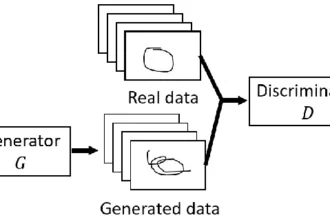Are you tired of feeling like a statistical outlier? Well, fear not, because in this blog post, we’re diving deep into the world of normality and the intriguing concept of the normaltest. Whether you’re a math enthusiast or just someone looking to understand the importance of normality in statistics, this article has got you covered. So, grab your histogram and get ready to embark on a journey through the fascinating realm of normality testing. Let’s put the “normal” in Normaltest and uncover the secrets behind this statistical phenomenon.
Table of Contents
ToggleUnderstanding Normality and Normaltest in Statistics
The concept of normality in statistics is akin to finding a common thread in the rich tapestry of data that weaves through countless disciplines. Picture, if you will, the graceful arch of a symmetrical bell curve, a graphical representation synonymous with the normal distribution. This curve is not merely an elegant mathematical construct; it embodies the distribution of myriad variables that punctuate our natural and social worlds. From the stature of an individual to the scores achieved on a standardized test, the normal distribution is omnipresent, offering a baseline for understanding the world around us.
Consider a classroom of students, each unique in abilities and talents. Yet, when we measure a particular attribute, like reading ability, we often find that these individual differences aggregate into a familiar shape: the majority clustering around an average, with fewer students at the extremes of performance. This phenomenon is not limited to academia; it is mirrored in the heights of individuals, the birth weights of infants, and even in the elusive pursuit of job satisfaction.
| Variable | Example of Normal Distribution |
|---|---|
| Height | Human heights tend to cluster around a central average with fewer individuals being extremely tall or short. |
| Birth Weight | Most newborns have a weight that is close to the average, with fewer babies being very heavy or light. |
| Reading Ability | Students’ reading skills typically form a bell curve, with most scoring near the middle. |
| Job Satisfaction | Employee satisfaction levels often follow a normal distribution within an organization. |
| SAT Scores | Scores on standardized tests like the SAT generally form a bell-shaped distribution. |
A normality test, such as the Shapiro-Wilk test, Kolmogorov–Smirnov test, or D’Agostino-Pearson’s K² test, is an analytical beacon that guides researchers to ascertain whether their data sets sail the normal seas. These tests are the lighthouses that reveal whether the distribution of sample data is consistent with a normal distribution, offering safe passage for the application of further statistical tests that assume normality, such as the Student’s t-test or one-way and two-way ANOVA.
To gauge normality, a dataset must conform to the empirical rule, a statistical theorem as fundamental to statisticians as the compass is to sailors. It dictates that approximately 68% of the data should fall within one standard deviation of the mean, about 95% within two, and 99.7% within three standard deviations. When a dataset adheres to this rule, its graph takes on the characteristic bell shape, centered around the mean, tapering off symmetrically to either side.
By understanding normality, one unlocks the potential to make inferences about entire populations based on sample data, to predict outcomes, and to make informed decisions. The significance of the normal distribution in statistics cannot be overstated—it is the heartbeat of many analytical processes, pulsing through the veins of data-driven decision-making.
Visual representation of data, such as histograms, further illuminates the concept of normality. In the section that follows, we’ll delve into how these visual tools not only depict the distribution of data but also serve as a critical step in the journey of statistical analysis.
Why Normality Matters
In the grand tapestry of statistical analysis, the assumption of normality stands like a central thread, weaving through an array of hypothesis tests and data interpretations. The allure of the bell curve’s symmetrical slopes is not merely aesthetic; it underpins the very essence of rigorous statistical inference. Imagine for a moment a world where insights spring not from the chaotic well of randomness but from the orderly realm of predictability. This is the world that the assumption of normality promises, where the Student’s t-test and ANOVA (Analysis of Variance) can operate with precision, offering a clear lens through which we can understand our data.
Why does this matter? Consider the Normaltest, a sentinel standing guard against the misuse of parametric tests. Without it, we might blindly apply these tests, which are designed for normally distributed data, to any dataset, potentially leading us astray with false conclusions. The Normaltest serves as our reality check, ensuring that the foundation of our analysis is solid and that the results we claim are likely to stand the test of scrutiny.
When we carry out a Normaltest, we’re not just performing a routine check; we’re engaging in a ritual that upholds the integrity of statistical analysis. It’s a moment of truth where we either gain the confidence to proceed with powerful tests like the t-test and ANOVA or pause to consider alternatives better suited to our data’s story. It’s about matching the right tools to the right task, ensuring that our conclusions are not just statistically significant, but also meaningful and reliable.
By embracing the Normaltest, we acknowledge that our quest for knowledge is guided by principles that help us navigate through uncertainty. It’s a testament to our commitment to making informed decisions grounded in a proper understanding of the data. In the unfolding narrative of our statistical journey, normality isn’t just a convenient assumption—it’s a beacon that guides us towards the shores of insight, allowing us to dock our inferences in the harbor of validity.
As we move forward in our exploration, let us carry with us the profound significance of normality in statistics. It is the heartbeat of many of the tests we will encounter, animating the numbers and breathing life into the figures that dance across our datasets. With this understanding, we are better equipped to unlock the stories hidden within the data, stories that can inform, enlighten, and ultimately lead us to make better decisions in an increasingly data-driven world.
So, as we delve deeper into the mechanics of the Normaltest in the following sections, let us appreciate its role in our statistical toolkit—a role that ensures the reliability of our findings and the credibility of our analyses.
How Does a Normality Test Work?
Imagine you’re an archer trying to hit the bullseye on a target. The arrows represent your data points, and the bullseye is the perfect model of normal distribution. Just as an archer’s skill is judged by the pattern of the arrows on the target, a normality test evaluates how well your data conforms to the expected pattern of a normal distribution.
In the statistical arena, the p-value is akin to an archer’s scorecard. It quantifies the probability that your data would align with a normal distribution purely by chance. When we perform a normality test, we’re essentially putting our data on trial to see if it’s guilty of deviating from normality.
Our typical threshold for “reasonable doubt” in this trial is a p-value of 0.05. A p-value higher than this benchmark suggests that, like an archer whose arrows cluster near the bullseye, your data is not significantly different from a normal distribution. This means the data could indeed have originated from a normally distributed population, passing the test of normality.
However, should the p-value fall at or below the 0.05 threshold, it’s as though our archer has missed the mark. The data is then considered to have statistically significant deviations from normality, failing the normality test. This verdict implies that the distribution of your data is likely different from the normal distribution, and caution should be exercised before drawing conclusions based on parametric statistical tests that assume normality.
Shapiro-Wilk: The Preferred Test for Normality
Among the quiver of tests available for normality, the Shapiro-Wilk test shines for its precision and reliability, especially in the case of small sample sizes (n < 50). It is akin to a finely-tuned bow, best suited for hitting the statistical bullseye when the number of arrows—our data points—is limited.
The Shapiro-Wilk test scrutinizes the arrangement of your data and compares it to what’s expected from a normal distribution, calculating a p-value to determine how closely your data matches the normal model. Its sensitivity makes it the test of choice for statisticians, akin to an archer choosing the best bow for a competition. The accuracy of the Shapiro-Wilk test in detecting non-normality in small samples is what has cemented its place as the go-to method among researchers.
By employing the Shapiro-Wilk test, we ensure that our statistical conclusions are drawn from a bowstring taut with integrity, rather than one that’s frayed with potential inaccuracies. This commitment to using the right tools for assessing normality is what lends credibility to our analysis, allowing us to aim with confidence at the heart of our investigative questions.
When we embrace the rigor of the Shapiro-Wilk test, we’re not just crunching numbers; we’re upholding a tradition of excellence in statistical analysis. It’s a practice that doesn’t just reveal the story within our data—it ensures that the tale is told with utmost precision.
Visualizing Normality: The Role of Histograms
Embarking on a statistical journey requires not just the rigorous crunching of numbers but also an artistic eye to visualize the tale that data unfolds. Here, histograms emerge as the storyteller, painting a picture of data distribution in a way that numbers alone cannot convey. Imagine each bar on a histogram as a snapshot of frequency, rising and falling in a rhythm that, when patterned after a symmetrical bell, whispers the secrets of normality to those who observe.
When you plot a histogram, you are essentially casting a net over your data points, capturing them within intervals to see where they cluster. A distribution that is approximately normal will reveal itself through a histogram’s silhouette – a gentle rise to a peak in the middle, with a graceful descent towards the tails. This visual cue, reminiscent of a bell curve, is the first indication that your dataset might be playing by the rules of normality, an essential aspect for many statistical analyses.
However, the story does not end there. Life, much like data, is replete with exceptions and deviations. What happens when the histogram’s bars chart an unexpected course, defying the anticipated bell shape?
Dealing with Non-Normal Data
Should your dataset stage a rebellion against normality, failing the normality test, the histogram serves as a detective’s tool to uncover the culprits. A closer inspection might reveal outliers – data points that stand apart from the crowd, or perhaps a skewness where the data stretches out more on one side than the other. These are the clues that help diagnose the source of non-normality.
If outliers are not to blame, it may be time to consider a transformation – a mathematical manoeuvre to coax the data into conformity. Techniques like logarithmic or square root transformations can be the alchemist’s stone, turning a skewed distribution into one that resembles normality more closely.
By using histograms to visualize data distribution and applying appropriate corrective measures when necessary, statisticians can ensure that the assumptions of their analytical methods are met. This not only safeguards the integrity of their conclusions but also fortifies their findings against the scrutiny of peer review. In the realm of data analysis, a well-constructed histogram is not just a visualization tool; it is a lens through which the very essence of the dataset can be discerned.
Carrying forward, we will delve into the concept of sampling distribution, which further solidifies our understanding of normality and its pivotal role in statistics.
The Concept of Sampling Distribution
Imagine you’re an archer. Each arrow you shoot represents a sample mean, and the bullseye is the true population mean. With a quiver full of arrows (samples), if the population from which you’re drawing is perfectly normal, each arrow will hit the bullseye dead center, no matter how many you shoot. This is what statisticians refer to when they say the sampling distribution of X- is exactly normal for any sample size if the population is normal.
But what if the population isn’t perfectly normal or your sample size is small? Fear not, the Central Limit Theorem comes to the rescue like a gust of wind, guiding your arrows. As the sample size increases, the arrows begin to cluster more closely around the bullseye. This is the essence of the theorem – it states that as the sample size grows, the sampling distribution of the mean will be approximately normal, even if the population itself isn’t perfectly so.
Identifying Non-Normal Data
Now, let’s turn our attention to the histogram, a visual storyteller of data distribution. Think of a histogram as a mirror reflecting the face of your data. Just as a quick glance in the mirror can reveal if your hair is out of place, a simple histogram can highlight whether your data is donning the classic bell shape of normality or if it’s sporting something a bit more avant-garde.
Creating a histogram is like sketching the silhouette of your data. If the silhouette forms a symmetrical bell, then congratulations, your data may be ready for the runway of normal distribution. But if it’s lopsided, with a skew to the left or right, or if it takes on an unexpected flat top, your data ensemble is hinting at non-normality. These deviations from the classic bell curve can be clues that your data might require a transformation or a different analytical approach to ensure the accuracy of your statistical inferences.
By now, it’s clear that the histogram is not just a tool, but a critical ally in the quest to understand the true nature of your data. It’s the first step in a journey that may lead to the application of transformations or alternative statistical methods. So before we proceed further into the statistical wilderness, let’s ensure we are equipped with the knowledge of normaltest and the stories our histograms tell us.
Conclusion
Embarking on a journey through the realm of statistical analysis is akin to navigating the complex tapestry of the natural world. Just as explorers use stars to guide their way, statisticians employ the principles of normality and tools like the Normaltest to illuminate the path to understanding. Grasping these concepts is not merely academic—it’s a fundamental skill that applies to a multitude of scenarios, from dissecting SAT scores to unraveling the patterns within social research, or even deciphering the rhythms of the natural environment.
Imagine, if you will, a world where the Normaltest serves as a compass, pointing researchers toward the true characteristics of their data. Whether a dataset whispers the secrets of normal distribution or shouts its divergence, the normality test is the first step in a statistical odyssey. It screens the data, much like a gatekeeper, ensuring that the assumptions of parametric tests such as the Student’s t-test and ANOVA are met with a nod of approval.
When faced with the pivotal question of “What is the best test for normality?” one must consider the sample size and the sensitivity required. The Shapiro–Wilk test, revered for its power, especially in cases of smaller sample sizes, emerges as a beacon of reliability. In the grand theater of statistics, normality plays a starring role, with its bell curve symbolizing the harmonious balance of data points clustered around the mean.
Should the normality test reveal that the data has strayed from the path of normality, do not despair. The histogram stands ready, a visual storyteller, highlighting outliers or skewness that may have led data astray. Then, like an alchemist, one might employ transformations—logarithmic or square root—to transmute non-normal data into a form that aligns with the golden standard of normal distribution.
Within this statistical narrative, three heroes emerge: the Shapiro-Wilk test, the Kolmogorov–Smirnov test, and the D’Agostino-Pearson’s K² test, each with unique prowess to challenge the normalcy of data. Their quest is to ensure that researchers can confidently march forward, armed with the knowledge that their analyses rest upon the robust foundation of statistical normality.
As we continue to unveil the secrets held within our data, let us remember that the pursuit of normality is more than a procedural checkpoint—it’s a critical step in the dance of discovery that underpins the integrity of our conclusions. Armed with this understanding, you stand at the threshold of insightful and credible statistical analysis, ready to delve deeper into the fascinating world of data-driven knowledge.
Q: What is a normality test?
A: A normality test is used to determine whether sample data has been drawn from a normally distributed population (within some tolerance).
Q: What are the three normality tests?
A: The three normality tests are the Shapiro-Wilk test, Kolmogorov-Smirnov test, and D’Agostino-Pearson’s K² test.
Q: Can you give an example of normal distribution?
A: Yes, variables such as height, birth weight, reading ability, job satisfaction, or SAT scores are examples of variables that are normally or approximately normally distributed.
Q: What is the easiest normality test to use?
A: The normal Q-Q plot is an alternative graphical method of assessing normality and is easier to use when there are small sample sizes. The scatter should lie as close to the line as possible with no obvious pattern coming away from the line for the data to be considered normally distributed.





